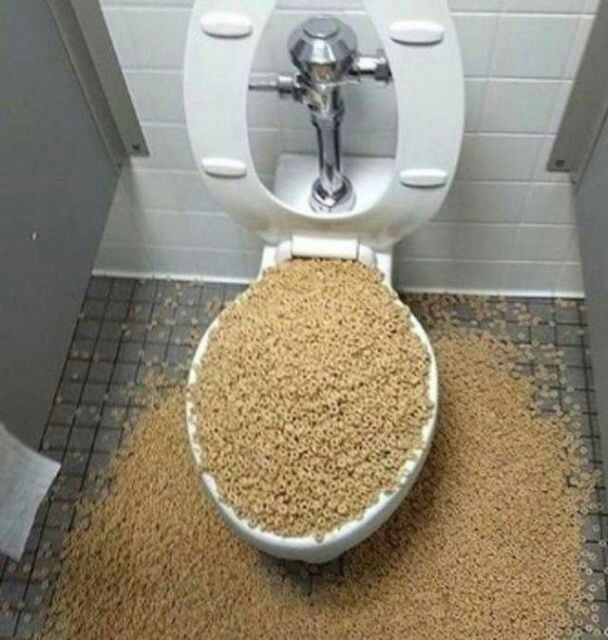The content on the next paragraphs involving Is it safe to flush food (especially rice) down the toilet? is unquestionably remarkable. Don't overlook it.

Introduction
Many people are usually faced with the predicament of what to do with food waste, particularly when it comes to leftovers or scraps. One typical question that occurs is whether it's alright to flush food down the commode. In this short article, we'll delve into the reasons people could think about purging food, the repercussions of doing so, and alternative techniques for proper disposal.
Reasons individuals could take into consideration flushing food
Lack of recognition
Some people might not recognize the prospective harm caused by flushing food down the bathroom. They might incorrectly believe that it's a harmless technique.
Benefit
Purging food down the commode may appear like a fast and simple solution to getting rid of undesirable scraps, particularly when there's no nearby trash bin available.
Idleness
In many cases, individuals may just pick to flush food out of sheer negligence, without considering the repercussions of their actions.
Consequences of flushing food down the commode
Ecological influence
Food waste that winds up in rivers can contribute to pollution and damage aquatic ecological communities. Additionally, the water utilized to purge food can strain water resources.
Plumbing problems
Purging food can cause blocked pipes and drains, triggering costly plumbing repair work and troubles.
Types of food that need to not be purged
Fibrous foods
Foods with fibrous appearances such as celery or corn husks can get entangled in pipelines and create clogs.
Starchy foods
Starchy foods like pasta and rice can take in water and swell, leading to obstructions in pipes.
Oils and fats
Greasy foods like bacon or cooking oils need to never be flushed down the commode as they can solidify and create clogs.
Appropriate disposal methods for food waste
Using a waste disposal unit
For homes geared up with garbage disposals, food scraps can be ground up and purged through the pipes system. Nevertheless, not all foods appropriate for disposal in this manner.
Recycling
Particular food product packaging materials can be recycled, lowering waste and minimizing environmental influence.
Composting
Composting is an eco-friendly way to throw away food waste. Organic products can be composted and utilized to enrich soil for gardening.
The significance of correct waste administration
Lowering environmental harm
Appropriate waste management practices, such as composting and recycling, assistance decrease air pollution and protect natural resources for future generations.
Shielding pipes systems
By avoiding the technique of flushing food down the toilet, home owners can stop costly pipes repair work and preserve the stability of their plumbing systems.
Verdict
Finally, while it might be tempting to flush food down the toilet for comfort, it is necessary to understand the possible repercussions of this action. By adopting proper waste administration practices and taking care of food waste properly, people can contribute to much healthier pipes systems and a cleaner environment for all.
FLUSH FOOD DOWN THE TOILET?
FLUSHING FOOD CAN CAUSE BLOCKED DRAINS IN YOUR HOME
All of the plumbing fixtures in your home are connected to the same sewer pipe outside of your home. This outdoor sewer pipe is responsible for transporting all the wastewater from your home to the Council sewer mains. Even small pieces of food that go down the kitchen sink can cause problems for your sewer. It should therefore be obvious that flushing larger bits of food, such as meat, risks a clog in either the toilet itself or the sewer pipes. Flushing greasy food is even more problematic because oil coagulates when it cools, coating the interior lining of your pipes.
THE TOILET IS NOT A BIN
Food isn’t the only thing that people shouldn’t be flushing down the toilet. People use the toilet to dispose of all kinds of things such as tampons, makeup wipes, dental floss, kitty litter and even underwear. Water goes to great lengths to educate residents about the high costs and stress placed on wastewater treatment systems simply from people flushing the wrong stuff down the toilet. It costs taxpayers millions of dollars each year, and homeowners thousands in blocked drain repairs.
FLUSHING FOOD IS A WASTE OF WATER
Flushing food is a waste of our most precious resource - water. In June this year Level 1 water restrictions were introduced to protect water supply from drought conditions. Much of New South Wales continues to be affected by prolonged drought with recent figures revealing up to 97 per cent of the state remains in drought. Depending on whether you have a single or dual flush toilet, every single flush uses between five and 11 litres of water. In the current climate this is a huge amount of water to be wasting on flushing food that should be placed in the bin (or better yet, the compost).
https://www.jabplumbingsolutions.com.au/blog/can-you-flush-food-down-the-toilet

We hope you liked our piece about Think Twice Before Flushing Food Down Your Toilet. Thanks a ton for taking time to browse our content. Sharing is caring. You won't know, you may just be doing someone a favor. I am grateful for your time. Please come by our site back soon.
Schedule Now!